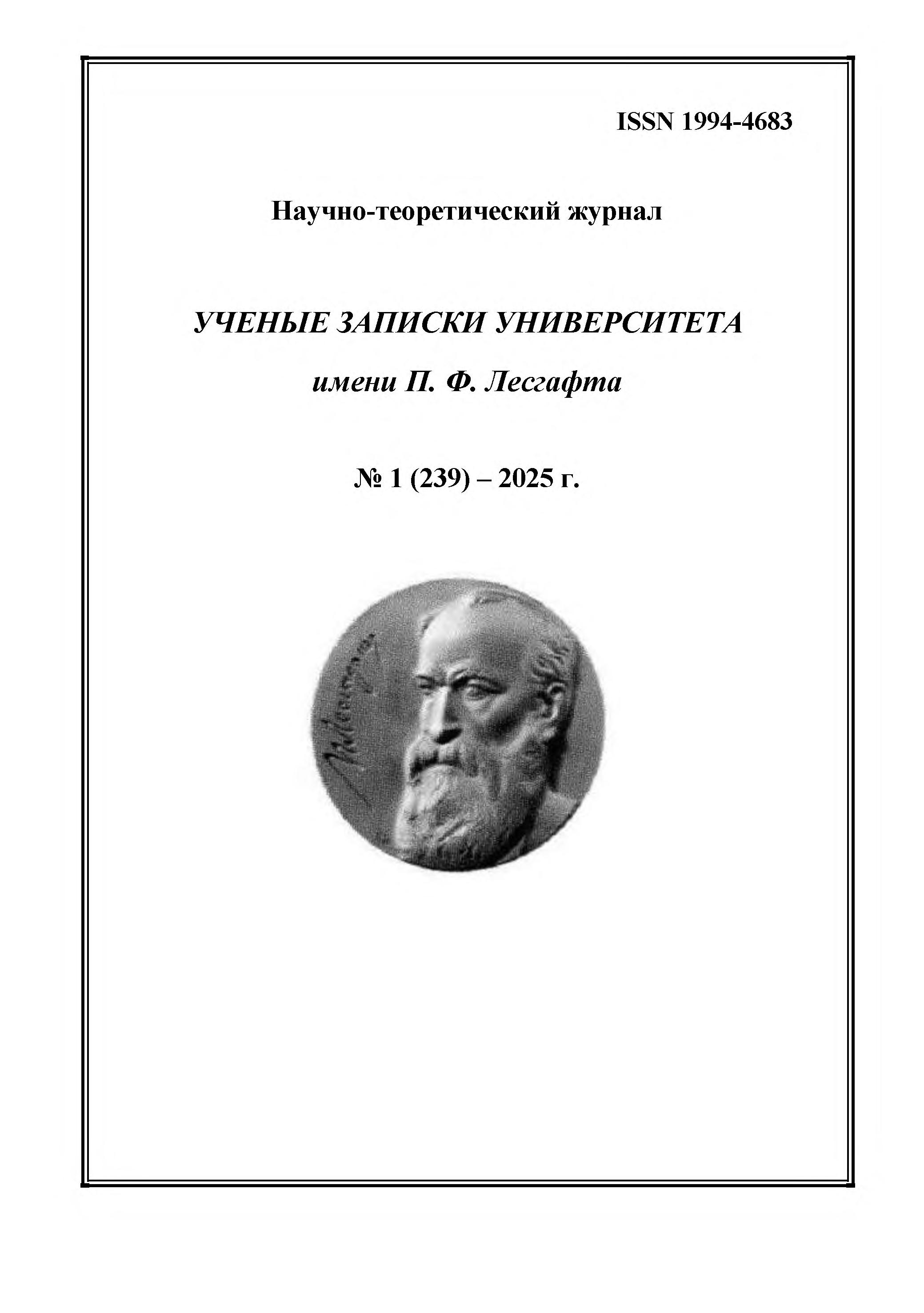employee from 01.01.2020 until now
Kazan, Russian Federation
employee from 01.01.2020 until now
Kazan, Kazan, Russian Federation
UDC 796.011.3
CSCSTI 77.01
Russian Library and Bibliographic Classification 75
The purpose of the study is to identify and analyze the stress factors that arise among students during the completion of academic assignments in the discipline of "Elective Courses in Physical Culture and Sports" in the context of distance learning. Research methods: analysis of scientific and methodological literature on the research topic, observation, interviews, surveys, analysis, classification, and statistical processing of data. A survey of respondents was conducted using a questionnaire that included 17 stress factors related to distance learning in the subject "Elective Courses in Physical Culture and Sports." Research results and conclusions. The study identified and analyzed stress factors associated with online physical education. Dominant factors with the greatest significance were analyzed: 1) "Physical fatigue, laziness, and drowsiness before completing a physical education assignment"; 2) "Household chores/care (cleaning, laundry, cooking, etc.)"; 3) "Technical malfunctions in the operation of Moodle." The results obtained allow for the identification of problematic areas affecting the effectiveness of the educational process in an online format, as well as outlining a direction for future research on the organization of physical education classes using distance educational resources.
distance education, online education, physical culture, physical education of students, stress factors, distracting factors, Moodle
1. Bondarenko N. V., Varlamova T. A., Gokhberg L. M. et al. (2024), “Education indicators: 2024: statistical digest; Nat. research. University”, Higher School of Economics, Moscow, 416 p., doihttps://doi.org/10.17323/978-5-7598-3010-8/.
2. Martynova O. V. (2021), “Psychological view of distance learning”, Problems of modern agricultural science, Proceedings of the international scientific conference, Krasnoyarsk, Krasnoyarsk State Agrarian University, pp. 500–502.
3. Chernysheva A. V., Savelyev V. A. (2024), “Online learning as a trend in the digitalization of education: communication features”, Pedagogy of our time, No. 1-2 (28), pp. 66–71.
4. Robert I. V. (2024), “Development of didactics in the context of digital transformation of education”, Innovative processes in higher and secondary vocational education and professional self-determination, Collection of scientific papers, Moscow, Econ-Inform, pp. 347–362.
5. Morokina G. S. (2021), “Application of distance technologies in the educational process of a university”, Modeling and situational quality management of complex systems, Second All-Russian scientific conf., Saint Petersburg, Saint Petersburg State University of Aerospace Instrumentation, pp. 188–190.
6. Ostwald G. V., Dovbysh S. A. (2021), “Distance learning in modern conditions: problems and prospects”, Agrarian science – to agriculture, Coll. of materials. XVI International scientific-practical. conf. In 2 books, Barnaul, Book 1, Barnaul, Altai State Agrarian University, pp. 32–33.
7. Robert I. V. (2024), “Development of didactics in the context of digital transformation of education”, Innovative processes in higher and secondary vocational education and professional self-determination, Coll. of scientific papers, Moscow, Econ-Inform, pp. 347–362.
8. Plakhotina N. A. (2025), “Problems of pedagogical activity using distance technologies”, Strategic guidelines for the development of higher education: management of human resources, Coll. art. I All-Russian Forum of Higher Education Teachers, Moscow, Knorus, pp. 720–724.
9. Chernysheva A. V., Savelyev V. A. (2024), “Online learning as a trend in the digitalization of education: communication features”, Pedagogy of our time, No. 1-2 (28), pp. 66–71.
10. Kononykhina O. V. (2021), “Motivation of students in distance learning”, International Journal of Humanities and Natural Sciences, No. 2-1 (53), pp. 107–111.
11. Egiazaryan A. A., Korolev P. V., Grigoriev V. A. [et al.] (2024), “Digital technologies in physical education of students: experience of using a mobile application”, Theory and practice of physical education, No. 2, pp. 61–63.








